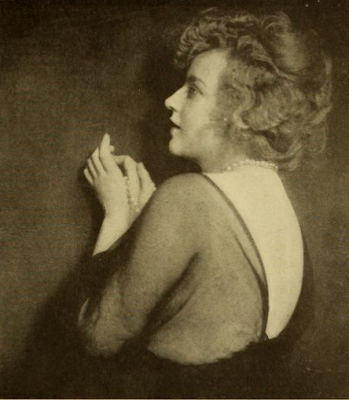Marguerite Clayton never quite eclipsed her famous leading man G.M. “Broncho Billy” Anderson, but she managed keep a respectable film career alive for 15 years before retiring right around the introduction of sound. From humble beginnings, to becoming one of the most popular photoplayers in the early days of the industry, Clayton had quite a career and, fortunately for us, some of her work is still available for us to enjoy.
Margaret Fitzgerald was born in Ogden, Utah on April 12, 1891 (some sources say 1892) to Irish and Welsh parents. She was the third of four children born to Michael and Belle Fitzgerald, but little is known about her early years. She proudly told fan magazines that she had entered right into the motion picture industry without having done any real stage work (though later interviews dispute that). She was educated at convent called St. Mary’s in Salt Lake City and sang in the tabernacle from a young age. Her father was a mining engineer, and by 1910, the family seems to have made the move from Utah to San Francisco, where her father ran a bar.
Despite having no familial connection to the stage, Clayton found herself drawn to film, and began to dream of appearing on screen. When a LA-based paper ran an ad that said the western branch of Essanay was searching for actresses to join the company, she was quick to respond. In mid 1913, she joined the Essanay company doing small parts. The bit roles didn’t last long though, for after about 3 months she was starring alongside Mr. Anderson himself in his “Broncho Billy” pictures.
Marguerite Clayton and G.M. Anderson in a Broncho Billy installment
She was inexperienced, but that seemed to play to her benefit. “I decided when I went into motion pictures that I didn’t know a thing about them, and that I would do just as the director told me. I have always followed that rule. No matter what the director says, I do it.” She was also focused on becoming a true film artiste. “I intend to keep on working until I am at the top. If I could always be sure of as good a teacher as Mr. Anderson is, I am sure I’d have no doubts of getting there.”
Marguerite Clayton and Richard Travers in "The Egg"
Clayton briefly left the company to pursue a part in a stage production called “The Candy Shop,” and later briefly left the company to pursue parts with the Liberty company. But by April of 1915, she was back at Essanay and back with Broncho Billy. Although she had grown into a western star courtesy of the Niles branch of Essanay, by late 1915, she found herself established at her new home at the Chicago branch. Rather than playing opposite the rugged G.M. Anderson, she found herself playing leads with handsome Richard Travers, and rather than playing in westerns, she found herself in dramas and light comedies. Her first role at the Chicago branch was “A Daughter of the City,” a morality play in which she played the titular role and got to show her range.
She was one of 12 players added to the Essanay stock company and, in 1917, one of the players who got to play in Essanay’s line of Black Cat Features -- snappy, sharp, two-reel comedy dramas that were based on Black Cat Magazine. She even starred in a unique picture where she, through some trick photography, was turned into a living doll. Despite being one of the company’s favorite and most consistent players, in late 1917, Clayton left the company to freelance with Paralta and later Artcraft, Paramount, and Paragon. In mid-1918, she made her last major picture splash with “Hit-the-Trail Holliday,” a prohibition play written by and starring George M. Cohan. She was happy with the change of scenery her parts had taken, telling fan reporters, “I wouldn’t go back into Western stuff for the world,” but her career was starting to slip.
In 1922, she sued Pathe for $50,000 in damages when she was struck by a pipe while filming. She alleged that the injury had left her with a permanent facial scar, but it’s unclear whether the case ended in a ruling or a settlement. She continued to work in film in both the US and Europe, but by the time the talkies started to take hold in the late ‘20s, she had disappeared from the screen.
With the ‘30s came her marriage to Victor Bertrandias, a major in the US Air Force, and her retirement from the screen. She took Victor’s last name, and, save for a few instances, managed to stay out of the spotlight. The couple were married until his death in 1961. Marguerite died seven years later.
The name of Marguerite Clayton never rose to the ranks of a Norma Talmadge or a Mary Pickford, but thanks to her work in the "Broncho Billy" series, she’s achieved an immortality among silent film lovers. To watch the Broncho Girl of the Essanay Company in action, check out two installments of the “Broncho Billy” series below.









No comments:
Post a Comment